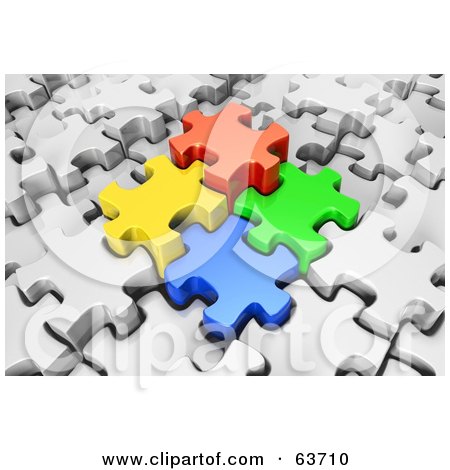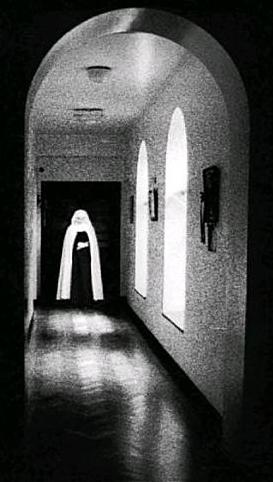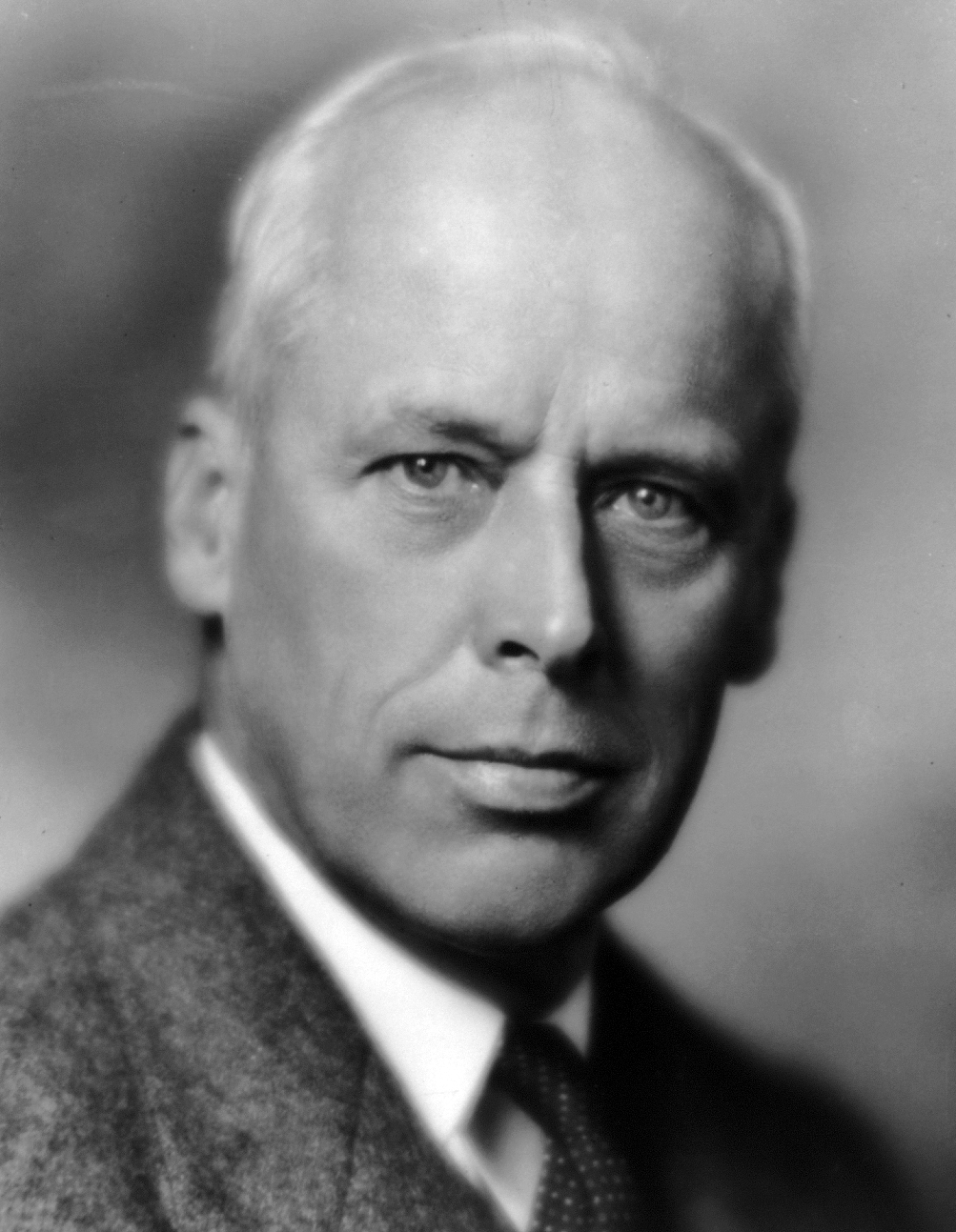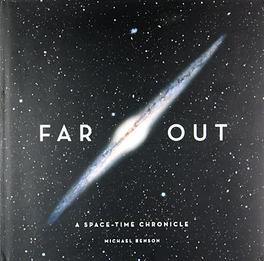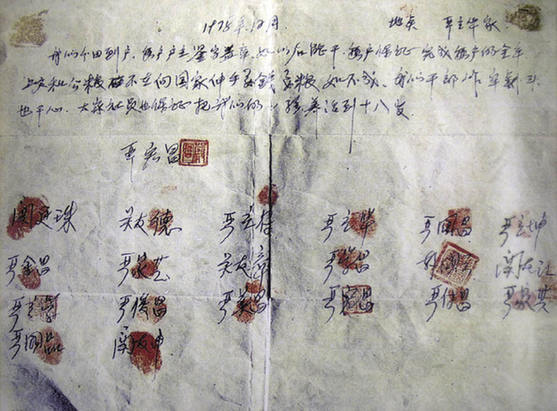

|
Perfection You have chosen wisely and performed perfectly every task that has been laid before you. All that remains is for you to read and absorb the message on this page. — Josh Mitteldorf |
1 November 2009
|
||
|
Puzzles I believe that puzzles are miniature models of the inner workings of the imagination and thus, in doing them, we gain insights into ourselves. This unconscious process is, in my view, what makes them so appealing — and frustrating at the same time, when the answer is not found. Self-knowledge is always its own reward. This is why when we do get the answer we feel that everything is right in the world; when we don’t we get a sense of chaos and veritable angst. It is difficult to put aside an unsolved puzzle, isn’t it? From the beginning of time, people have been fascinated by riddles, visual conundrums, games, etc. because they provide a kind of relief from the drudgery of everyday life and, in so doing, give insight into who we are. In the ancient world, puzzles were part of rituals and the so-called mystery cults. Solving them was felt to to constitute a process of self-revelation and, unlike the great mysteries of existence, they led to concrete answers. – Marcel Denesi
|
2 November 2009
|
||
|
Sharing raw data The impetus comes from genomic sequence data, which requires big, expensive machines, and can be used to answer many diverse questions. But the principle is quite general: sharing experimental data on line is a huge boost to science. Any individual researcher may not want to share his data, because it gives others the opportunity to interpret it, stealing some of his thunder. But we all want the other guy to share his data. It’s coming. Scientific journals have space for ‘supplemental materials’ on the web, and are starting to expect that authors post the data from which their conclusions are drawn. This is a big and important trend. Science is politicized to a greater extent than any of us wants to admit, and, of course, politics is poison to the workings of science. The trend toward expensive equipment and large grants to fund it has centralized scientific investigation to everyone’s detriment. The trend toward cheap computing power has democratized science, to everyone’s benefit. As data sharing becomes an expected part of the process, there will be less opportunistic interpretations of data and more diverse and creative modes of analysis. — JJM
Old article in Science magazine.
New
articlein Science magazine. |
3 November 2009
|
||
|
“Don't let yesterday use up too much of today.” — Will Rogers, born this day in 1879 |
4 November 2009
|
||
|
The widest human collaboration since the Great Wall of China Across the world, Wikipedia is consulted 50-80 thousand times per second. There are 3 million English language articles, and 10 million more in other languages. There are thousands of people who devote substantial portions of their working lives to editing and researching Wikipedia articles (the top 4,000 are listed here, and each one of them has contributed at least 10,000 edits.) Wikipedia’s open structure inherently makes it an easy target for Internet trolls, spamming, and those with an agenda to push. Nevertheless, it is found to be among the most reliable general sources of knowledge on the planet. ‘Wikipedia’s potential lies in harnessing the “wisdom of crowds”; however, those crowds are only as wise as they are diverse.’ ‘Why do Wikipedians spend countless hours improving the site, often doing mundane, repetitive tasks they would never do for money?’ You may as well ask why JJM puts an hour or so each day into the Daily Inspiration.
Boston Review
article by Evgeny Morozov |
5 November 2009
|
||
|
Invitation to language Right here in this place words |
6 November 2009
|
||
|
Are you serious? “A man sufficiently gifted with humor is in small danger of succumbing to flattering delusions about himself, because he cannot help perceiving what a pompous ass he would become if he did” — Konrad Lorenz, born this day in 1903 “It is a good morning exercise for a research scientist to discard a pet hypothesis every day before breakfast. It keeps him young.” |
7 November 2009
|
||
|
New Age-y Hokum Spiritual teachers from Lao Tze to Jesus to Eckhardt Tolle have taught the unity of all life. Our very existence as individual humans is an illusion. My welfare is intimately tied to yours, and there is nowpeaking of what is good for me apart from what is good for you. The European Enlightenment was rooted in analysis and reductionism. The pinnacle of its triumph was the atomic theory, based on the premise that everything about the world can be deduced fro m the behavior and interactions of constituent atoms. Science looked with a jaundiced eye upon mysticism, and philosophers from Nietzsche to Sartre declared that ‘God is dead’. But a funny thing happened to 19th century atomic physics: it became empirically untenable, and the quantum theory which was developed in its stead is far more ambiguous about — some might even say friendly toward mysticism and the unity of nature. One of several essential weirdnesses of QM is that particles do not have independent existence. Yes — you heard that right. The way QM works is stranger than can be conveyed in words. Separate electrons cannot be tracked. The essential descriptor in QM is the wave function, and there is no separate wave function for each particle; rather there is a single wave function that describes the probability amplitude for simultaneously finding particle A in location 1, particle B in location 2, etc. What is more, the dynamical equation for the wave function takes explicit account of the possibility that particle A swapped places with particle B while we weren’t looking. This situation is so wildly non-intuitive, and so intractable to calculate, that people doing practical atomic calculations almost always find approximations in which the particles are separate, and experiments are designed in such a way as to instantify situations where In practical daily life, the approximation of separate particles works well for atoms, because they stay far enough apart that only rarely does one nucleus swap places with another. But electrons are a different story. Electrons in the solids and liquids most familiar to us truly have no separate existences, and can only be described as a collective wave. ...Maybe you have to have a certain sensibility to these things in order to perceive a connection to universal love. — Josh Mitteldorf |
8 November 2009
|
||
|
Dissent is what rescues democracy from a quiet death behind closed doors. — Molly Ivins |
9 November 2009
|
||
|
Not bored I believe that yawning should be integrated into exercise and stress reduction programs, cognitive and memory enhancement training, psychotherapy, and contemplative spiritual practice... Several recent brain-scan studies have shown that yawning evokes a unique neural activity in the areas of the brain that are directly involved in generating social awareness and creating feelings of empathy...Numerous neurochemicals are involved in the yawning experience, including dopamine, which activates oxytocin production in your hypothalamus and hippocampus, areas essential for memory recall, voluntary control, and temperature regulation. These neurotransmitters regulate pleasure, sensuality, and relationship bonding between individuals, so if you want to enhance your intimacy and stay together, then yawn together. ...Try it right now... Your eyes may start watering and your nose may begin to run, but you’ll also feel utterly present, incredibly relaxed, and highly alert. — Andrew Newberg, UPenn
Center for Spirituality and the Mind |
10 November 2009
|
||
|
Peace Peace comes from being able to contribute the best that we have, and all that we are, toward creating a world that supports everyone. But it is also securing the space for others to contribute the best that they have and all that they are. The good we secure for ourselves is precarious and uncertain until it is secured for all of us and incorporated into our common life. One is left with the horrible feeling now that war settles nothing; that to win a war is as disastrous as to lose one. War is not the continuation of politics with different means, it is the greatest mass-crime perpetrated on the community of man. When I despair, I remember that all through history the way of truth and love has always won. There have been tyrants and murderers and for a time they seem invincible but in the end, they always fall -- think of it, ALWAYS! |
11 November 2009
|
||
|
Variation On A Theme By Rilke |
12 November 2009
|
||
|
Listen to what Derek Bermel has done with two African folk songs. |
13 November 2009
|
||
|
Not so easy being a heretic It’s the 400th anniversary of the telescope. When Galileo looked at Jupiter, he discovered four companion dots - the largest four of Jupiter’s moons, which followed Jupiter through the sky, and changed their positions periodically with respect to the planet. The obvious conclusion was that Jupiter’s moons are revolving around Jupiter. But this was wrong, as everyone knew. The earth is the center of the universe, and everything revolves around the earth. The telescope must be a flawed instrument, and if it offered such clearly-fallacious views of the heavenly bodies, then nothing that it revealed was to be trusted. (Among the astronomers who considered deceptive the telescope of Galileo, the best known is Martin Horky.) We laugh at the ways scientists deceived themselves 400 years ago, but experience tells us that it is easy to see our mistakes once we are surrounded by people who see our mistakes. It is a good rule of thumb to take observations more seriously than theories, but experiments, too, can be flawed. At what point do we discard a broad, well-established theory that has served us well and say that it has been falsified by observation? Truth is a social phenomenon. Even those of us who regard ourselves as rugged individualists and dyed-in-the-wool positivists rely more than we like to think on the views of our community of enlightened individuals for judgments about what is real. Which of the favorite theories that form the foundation of our world view in the 21st Century will ultimately be discarded and discredited? If I had to bet, my answer would be: all of them. Being Heretic in the Knowledge Society, by Emanuela Scridel |
14 November 2009
|
||
|
Sanity and Freedom Continuously, we are free. In each moment, we may decide what to think, how to direct our attention, how to express ourselves, what overt actions to take. Our freedom is so vast that to exercise it moment-to-moment would be a surrender to chaos, and an act of madness. Thus it is tempting to focus on the restraints rather than the freedom, to delude ourselves into thinking that because of some disability, because of a pain or an obligation, even because of insufficient money, we are not free after all. This is a way to avoid madness, but it is dishonest. Many people (excluding present company of course, dear reader) remain mired in the perception of constraint, and never acknowledge their freedom. For those of us who wish to embrace freedom without continually second-guessing ourselves, it is necessary to seek profound knowledge of our own hearts, to commit ourselves to principles and to goals with which we reliably identify, and then to organize our lives around all that we yearn for most deeply. Habits, routines and commitments are the means by which we avoid being overwhelmed by a need for choice in each moment. We may consciously adopt our habits, routines and commitments, and organize our lives to be harmonious with the whispers of our deepest selves. This is the fundamental act of integrity with which we organize and dedicate our life energies. — Josh Mitteldorf ...or perhaps it is freedom that is the illusion, and if we should ever try to take it we would find out just how limited are our powers to resist internal and external determinants There’s just one way to find out. |
15 November 2009
|
||
|
The training of the human plant After Luther Burbank made his name breeding and crossing plant varieties, he turned his attention to education of young humans. In a 1922 book, Burbank advocated an approach to education based in respect, freedom and love of nature. Eugenics was in fashion at the time, and many proponents of human breeding were tainted by racism and cultural imperialism. Burbank drew on his experience with plants to make a case for the importance of diversity. He foresaw great benefit for the improvement of the human condition by mingling races and cultures. Waves of immigration to the US from Europe, Asia and Africa were a source of utopian hope. ‘...so may we hope for afar stronger and better race if right principles are followed, a magnificient race, far superior to any preceding it... ‘We [the US in 1922] are more crossed than any other nation in the history of the world, and here we meet the same results that are always seen in a much-crossed race of plants: all the worst as well as all the best qualities of each are brought out in their fullest intensities. Right here is where selective environment counts... ‘Not only would I have the child reared for the first ten years of its life in the open, in close touch with nature, a barefoot boy with all that implies for physical stamina, but should have him reared in love...By working with vast patience upon the great body of the people, this great mingling of races, to...surround them with all the influences of love... ‘Bear in mind that this child-life in these first ten years is the most sensitive thing in the world...Children respond to ten thousand subtle influences which would leave no more impression upon a plant than they would upon the sphinx...One cannot think of being dishonest with them.... ‘Pick out any trait you want in your child...be it honesty, fairness, purity, lovableness, industry, thrift, what not. By surrounding this child with sunshine from the sky and your own heart, by giving the closest communion with nature, by feeding this child well-balanced, nutritious food, by givint it all that is implied in healthful environmental influences, and by doing all in love, you can thus cultivate in the child and fix there or all its life all of these traits.’ |
16 November 2009
|
||
|
Pride 
Even rocks crack, I’m telling you,
and not on account of age. For years they lie on their backs in the heat and the cold, so many years, it almost creates the illusion of calm. They don’t move, so the cracks stay hidden. A kind of pride. Years pass over them as they wait. Whoever is going to shatter them hasn’t come yet. And so the moss flourishes, the seaweed whips around, the sea bursts forth and rolls back — and still they seem motionless. Till a little seal comes to rub up against the rocks, comes and goes. And suddenly the rock has an open wound. I told you, when rocks crack, it comes as a surprise. All the more so, people. — Dahlia Ravikovitch, born this day in 1939 |
17 November 2009
|
||
|
Keep moving Regular exercise is one of the more effective and inexpensive measures that can be undertaken to prevent or treat many different types of disease. This month’s issue of the German medical journal Deutsches Ärzteblatt is devoted to medical benefits of exercise. Exercise helps protect against heart disease, various cancers, depression, Alzheimer’s, auto-immune (including arthritis) and infectious diseases. A little exercise is a huge improvement over none. More is better. Most adults exercise...less than 30 minutes daily...It seems hard to imagine that, for millennia before the present, most people engaged in heavy physical activity several hours a day... Previously sedentary men who began participating in sports after age 50 were able to halve their mortality within 10 years compared to sedentary men of the same age. Only one-sixth of the fibers in a muscular nerve serve a motor function; the largest number (more than 40%) are sensory fibers (4). Thus, the musculature can be thought of as the body’s largest sense organ, which influences all organ systems and regulatory circuits through its complex connectivity with the central nervous system. Muscular work, for example, induces hormonal and autonomic changes that explain many of its remarkable effects on the mind and the immune system. — Dieter Leyk, in an introduction to this special issue of Deutsches Ärzteblatt |
18 November 2009
|
||
|
Wherever You lead me, I will follow Instead of going to the choir to wait for the others she, returned to her cell, knelt down on the floor again, and unfocused her eyes. Blessed is that servant whom the master finds awake when he comes. Pure awareness stripped her of everything. She became an ember carried
upward by the heat of an invisible flame. Higher and higher she rose,
away from all she knew. Powerless to save herself, she drifted up toward
infinity until the vacuum sucked the feeble light out of her. Nova. More luminous than any sun, transcending visibility, the flare consumed everything, it lit up all of existence. In this radiance she could see forever, and everywhere she looked, she saw God’s love. The above excerpt is from Lying Awake, by Mark Salzman. It is a book which describes quite convincingly the experiences of a California Carmelite nun from two perspectives: Sister John has direct experiences of God, which she records effortlessly as ecstatic poetry. Sister John has a benign tumor in the brain which causes intermittent delusions and headaches. |
19 November 2009
|
||
|
Socialist, pacifist, idealist ‘I believe that the hope for the future lies in a new social and economic order which demands the abolition of the capitalistic system. War itself is only the most horrible and dramatic of the many evil fruits of our present organized system of exploitation and the philosophy of life which exalts competition instead of cooperation. I am convinced that the hope of peace lies not so much in statesmen, who have already shown themselves bankrupt of ideas, but in people of all countries who demand the cessation of war in which they pay so horrible a price.’ Norman Thomas was leader of the Socialist party during a tumultuous era when socialists had a place at the table of American politics. He opposed World War I with a pacifist’s passion, and supported US entrance into WW II only after Pearl Harbor. He carefully distinguished democratic socialism from communism, and broke early with the Soviet regime. Every four years, like clockwork, he ran for President on the Socialist Party ticket. Norman Thomas was born one hundred twenty-three years ago today. |
20 November 2009
|
||
|
Astronomical Slide Show from Seed Magazine |
21 November 2009 |
||
|
Continued by other means... Death is the imperative to expand, carried beyond our biological limits*. — Josh Mitteldorf *I don’t claim to know this as a fact, but it is the most optimistic among scientifically plausible views of the relationship between consciousness and our physical brains, and thus of death. Quantum mechanics is not well understood at its foundation, but the best-accepted view of QM holds consciousness to have an existence independent of matter. Thus when a system is observed by a conscious entity, its probability wave collapses discontinuously to a single state, and its physical evolution instantaneously changes course. It is possible that consciousness has created living forms, and brains in particular as vehicles for itself. Since childhood, I have always had an intuitive sense of who I am that manifests as a sense of absurdity whenever I try to identify the entity to which I attach the pronoun ‘I’ with this individual animal. If this view of consciousness is correct, it probably leads to an affirmation of the message we have received from every mystic: that our existence as individuals is an illusion, and that the underlying consciousness of all beings is one consciousness. |
22 November 2009
|
||
|
Among the Multitudes
|
23 November 2009
|
||
|
This is the story of how Chinese villagers took matters into their own hands and ended the Cultural Revolution. ON the night of November 24, 1978, farmers of 18 households from Xiaogang, a village in Fengyang County, Anhui Province, signed a secret agreement using their thumb prints. They agreed to divide the land of the local commune into household plots in return for delivering fixed output quotas to the government with the condition of never asking for money or grain from the state. It was also written into the contract that if the cadres went to jail for this proposition, the other villagers would take care of their kids until they were 18. The household contract responsibility system was strictly forbidden at that time. Xiaogang was notorious locally for its poverty. Every resident received only 50 kg of grain every year, forcing many to roam the countryside begging after each harvest. One reason for this was the system of people's communes, or collective land ownership. The production team decided all matters regarding the land, so farmers had little incentive to work hard and good harvests weren't expected. ‘All we wanted was to feed our families,’ one of the signatories recalled. ‘If we could provide enough food, it was OK even if we ended up beheaded.’ In 1979, the village’s grain output was increased to 90,000 kg, roughly equal to the aggregation of all yields in the previous 20 years. The grain the village delivered to the government was seven times the fixed quota. Per capita annual income reached RMB 400, 18 times the previous year. The national average income for farmers that year was only RMB 113.6. The model was soon copied by neighboring villages. The central authorities gave their approval for the trial in 1980. The household contract responsibility system was popularized nationwide four years later, officially raising the curtain on rural reform. Xiaogang was called the ‘Number One village of China's reform.’ In recent years, Xiaogang has undertaken a second experiment: practicing land circulation and pooling plots into a cooperative operation. On September 30, 2008, Hu Jintao, general secretary of the Communist Party of China, praised the new trial when inspecting the village. Since then, land circulation has been implemented across the country. Farmers are entitled to transfer their rights of land use in return for compensation, making intensive agriculture possible. — Shuang Shuang, writing for China Today |
24 November 2009
|
||
|
Maybe it’s not you There is only one complete unblushing male in America: a young, married, white, urban, northern, heterosexual, Protestant, father of college education, fully employed, of good complexion, weight and height, and a recent record in sports. Every American male tends to look out upon the world from this perspective, this constituting one sense in which one can speak of a common value system in America. Any male who fails to qualify in any of these ways is likely to view himself – during moments at least – as unworthy, incomplete, and inferior; at times he is likely to pass and at times he is likely to find himself being apologetic or aggressive concerning known-about aspects of himself he knows are probably seen as undesirable. The general identity-values of a society may be fully entrenched nowhere, and yet they can cast some kind of shadow on the encounters encountered everywhere in daily living. —
Erving Goffman, |
25 November 2009
|
||
|
Gratitude is its own reward Gratitude, he thinks, is the highest form of worship; perhaps its only true form. One needs no intermediary to practice—no preacher or pope, no dogma or liturgy. It is efficient, effulgent, easy. The sole function of gratitude is to cast a light on the perpetual dance between souls. It is breath and intuition, sight and smell, taste and touch illuminated. Nothing is more satisfying that gratitude, he thinks, because it is love in practice. It licks clean all wounds and readies one for better things. It laughs at itself. Like its sister “forgiveness,” it cannot be denied. Nothing heals like gratitude. Gratitude is its own reward, its own perpetual garden. He knows that of the few that read this meditation fewer will take this matter to heart directly. Yet he is not deterred. He knows the power of words. Each one leaps off the page and into the consciousness and nests until it is ripe and ready for consumption. |
26 November 2009
|
||
|
‘I am a modern-day nomad. I have no permanent address, no possessions except the ones I carry, and I rarely know where I’ll be six months from now. I move through the world without a plan, guided by instinct, connecting through trust, and constantly watching for serendipitous opportunities.’ Risk-taking, trust, and serendipity are key ingredients of joy. |
27 November 2009
|
||
|
The upper half of time Time is earth and water. |
28 November 2009
|
||
|
How to decide Some people weigh moral values; others evaluate probabilities, and still others follow their impulses like an animal. There are those who tell you, go inside and find your deep voice. But some of our most primitive instincts have learned ventriloquism, and call to us as compelling as Siren. Here’s the most robust approach to choosing: Don’t. Watch your process, whatever it may be. Observe, witness, fully aware, perfectly patient, with meticulous care not to put a finger on the scale. — Josh Mitteldorf |
29 November 2009
|
||
|
from an idealistic cynic... “To succeed in life, you need two things: ignorance and confidence.” — Mark Twain, born this day in 1835 Whenever you find that you are on the side of the majority, it is time to pause and reflect. |
30 November 2009
|

